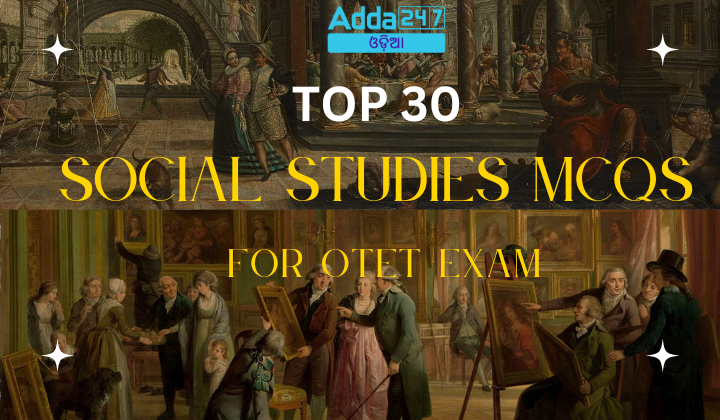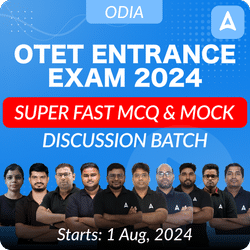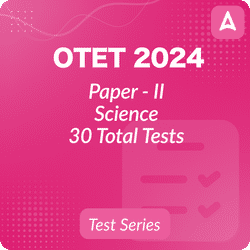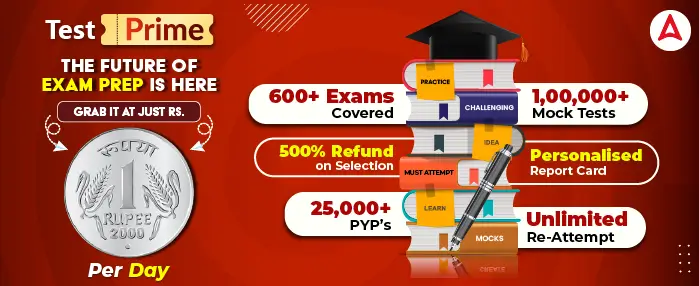Preparing for the OTET exam can be streamlined by focusing on key areas within Social Studies, such as History, Political Science, and Geography. These 30 multiple-choice questions cover crucial topics like the historical periods of the Sultanate, Mughal, and British rule, key figures and events in Indian nationalism, the structure and provisions of the Indian Constitution, and the physical and cultural geography of Odisha. By mastering these questions, candidates can enhance their understanding and increase their chances of success in the OTET exam.
Top 30 Social Studies MCQS For OTET Exam
- Which of the following best describes the primary aim of teaching social sciences at the upper primary stage?
(a) To memorize historical dates and events
(b) To understand the social and political structure of society
(c) To develop skills for scientific experiments
(d) To excel in competitive exams
Ans: (b) To understand the social and political structure of society - What is a specific objective of teaching social science?
(a) To make students memorize maps
(b) To develop critical thinking about social issues
(c) To focus on rote learning
(d) To prioritize economic theories
Ans: (b) To develop critical thinking about social issues - Why is the teaching of social sciences important at the upper primary stage?
(a) It helps in developing scientific temperament
(b) It promotes understanding of cultural heritage and diversity
(c) It focuses on learning foreign languages
(d) It is essential for understanding mathematics
Ans: (b) It promotes understanding of cultural heritage and diversity - The objective of teaching social sciences includes:
(a) Enhancing memorization skills
(b) Developing a sense of empathy and social responsibility
(c) Focusing solely on political history
(d) Ignoring contemporary social issues
Ans: (b) Developing a sense of empathy and social responsibility - Which method involves students collecting data from real-life settings?
(a) Survey
(b) Lecture
(c) Discussion
(d) Simulation
Ans: (a) Survey - Field trips in social science teaching are primarily used to:
(a) Teach students outside the classroom environment
(b) Engage students in experiential learning
(c) Conduct regular classroom assessments
(d) Reduce the teaching workload
Ans: (b) Engage students in experiential learning - The project method in social science teaching emphasizes:
(a) Individual work
(b) Group collaboration and practical application
(c) Passive learning
(d) Rote memorization
Ans: (b) Group collaboration and practical application - Which tool is most effective for assessing students’ understanding of historical events?
(a) Multiple-choice tests
(b) Essays and research papers
(c) Oral recitation
(d) True/false quizzes
Ans: (b) Essays and research papers - Diagnostic assessment in social science is used to:
(a) Grade students’ final performance
(b) Identify students’ learning difficulties
(c) Assign regular homework
(d) Conduct standardized tests
Ans: (b) Identify students’ learning difficulties - Remedial teaching in social sciences aims to:
(a) Enhance the performance of high achievers
(b) Address and support students with learning difficulties
(c) Focus on competitive exam preparation
(d) Teach advanced topics
Ans: (b) Address and support students with learning difficulties - Formative assessment techniques in social science include:
(a) Final exams
(b) Regular quizzes and group discussions
(c) Standardized tests
(d) Entrance exams
Ans: (b) Regular quizzes and group discussions - The fall of the Mughal Empire is often attributed to:
(a) Strong leadership
(b) External invasions and internal decay
(c) Industrialization
(d) Successful agricultural reforms
Ans: (b) External invasions and internal decay - The Khilji dynasty is best known for:
(a) Promoting democratic principles
(b) Economic and administrative reforms
(c) Encouraging European trade
(d) Spreading Buddhism
Ans: (b) Economic and administrative reforms - Kharabela’s reign in Odisha is noted for:
(a) Religious intolerance
(b) Cultural renaissance and expansion
(c) Economic decline
(d) Political fragmentation
Ans: (b) Cultural renaissance and expansion - Ashoka’s rule is marked by the spread of:
(a) Hinduism
(b) Buddhism
(c) Jainism
(d) Sikhism
Ans: (b) Buddhism - Which period in Indian history saw the establishment of the East India Company?
(a) Ancient Period
(b) Sultanate Period
(c) Mughal Period
(d) Colonial Period
Ans: (d) Colonial Period - Which part of the Indian Constitution deals with Fundamental Rights?
(a) Part I
(b) Part III
(c) Part IV
(d) Part V
Ans: (b) Part III - Human Rights include:
(a) Only political rights
(b) Only social and economic rights
(c) Civil, political, social, and economic rights
(d) Only cultural rights
Ans: (c) Civil, political, social, and economic rights - The Panchayati Raj system is an example of:
(a) Centralized governance
(b) Decentralized governance
(c) Federal governance
(d) Autocratic governance
Ans: (b) Decentralized governance - Which of the following is a major physical feature of Odisha?
(a) Thar Desert
(b) Eastern Ghats
(c) Western Ghats
(d) Vindhya Range
Ans: (b) Eastern Ghats
The primary crop grown in Odisha is:
(a) Wheat
(b) Rice
(c) Maize
(d) Barley
Ans: (b) Rice
Odisha is rich in which mineral resource?
(a) Gold
(b) Coal
(c) Iron ore
(d) Copper
Ans: (c) Iron ore - Which of the following is a major physical feature of Odisha?
(a) Thar Desert
(b) Eastern Ghats
(c) Western Ghats
(d) Vindhya Range
Ans: (b) Eastern Ghats - The primary crop grown in Odisha is:
(a) Wheat
(b) Rice
(c) Maize
(d) Barley
Ans: (b) Rice - Odisha is rich in which mineral resource?
(a) Gold
(b) Coal
(c) Iron ore
(d) Copper
Ans: (c) Iron ore - The tropical zone of the earth is characterized by:
(a) Extreme cold temperatures
(b) Moderate temperatures throughout the year
(c) High temperatures and high rainfall
(d) Low temperatures and low rainfall
Ans: (c) High temperatures and high rainfall - Which poet flourished during the reign of Rajaraja II of the Ganga dynasty?
(a) Sarala Dasa
(b) Jayadeva
(c) Kapilendra Deva
(d) Anantavarma Chodagangadeva
Ans: (b) Jayadeva - The right to vote in India is:
(a) A Fundamental Right
(b) A Statutory Right
(c) A Constitutional Right
(d) A Moral Right
Ans: (c) A Constitutional Right - Which of the following is the highest landform on Earth?
(a) Mount Kilimanjaro
(b) Mount Everest
(c) Mount Fuji
(d) Mount McKinley
Ans: (b) Mount Everest - What are the four major types of landforms?
(a) Mountains, valleys, plateaus, basins
(b) Mountains, hills, plateaus, plains
(c) Mountains, hills, canyons, basins
(d) Mountains, rivers, plateaus, basins
Ans: (b) Mountains, hills, plateaus, plains - Which landform is created by tectonic plate movements pushing up the Earth’s surface?
(a) Canyons
(b) Valleys
(c) Mountains
(d) Basins
Ans: (c) Mountains - What region is known for having many volcanic mountains?
(a) The Andes
(b) The Himalayas
(c) The Ring of Fire
(d) The Alps
Ans: (c) The Ring of Fire










